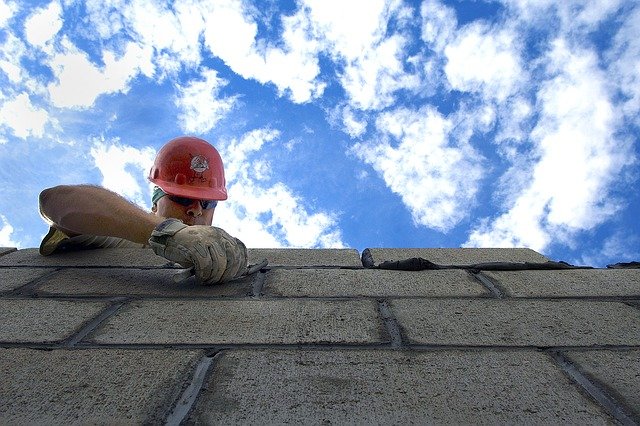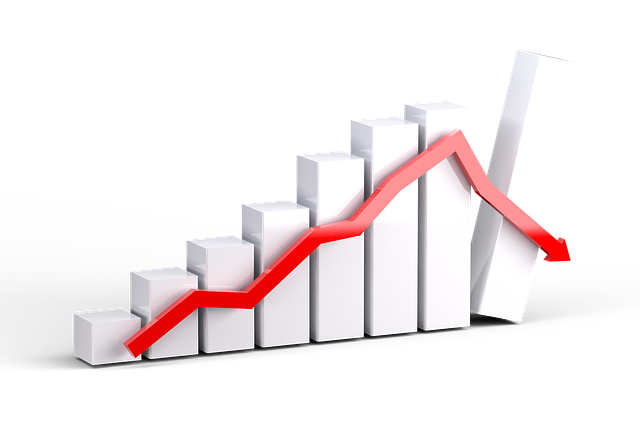
“How much does a website cost to build?” is a question many folks ask and the answer is a definitive, “It depends.” There are so many factors involved in answering that question that it must be taken on a case-by-case basis.
Like buying a car with many options to choose from, a website incorporates even more choices and decisions. I’ve had clients that only want the bare minimum and are happy with not doing anything else with it. I’ve also had clients that demand to keep swimming and be on the cutting edge to out-do their competition.
A website is an investment
The one thing you have to keep in mind if you do NOT already have a website is that it’s an investment. It’s not a one off “fee” and it should not just sit there doing nothing. A website must be kept updated with security patches and updates to all of the working parts within it. It should also be updated to reflect new information about your business. Not to mention, some newer technology is bound to come along. You should look at your website the way a customer would (which can be very difficult to do).
If you have a brick and mortar location, you’ve undoubtedly spent money on racks and shelves to display what you’re selling. Even though those things don’t make you money, they are there to display what CAN make you money. That was an investment you had to make in order to get business. So think of a website in the same way.

Driving factors in website cost
We’ve found that it takes at least 30 hours for a new website setup using a theme we have never used before. This also includes the purchase of hosting, a domain name, installing WordPress and modifying the basic settings in there.
Without getting too deep, there are plugins that must be installed to have your site run correctly and these can range from about 10-20, all which need some sort of configuration. Sometimes they even require you to set up an account in order to use them.
Once you install the theme, that’s the “base” of your site…the way it looks on the web. There are a TON of options and configuration that goes into that and where most of the time is spent.
If you need to sell products on your site, that will take a lot of additional time depending on the number of items and how they will be entered (manually or imported). You’ll definitely be paying more to have an eCommerce site, simply because it takes more time to do. Some of the main items that go into a single eCommerce product listing are:
- Photos of the product and text in the alt, description and title tags
- Description of the product
- Possible variations (i.e., Small, Medium, Large and potentially another level for colour and photos for each)
- Price
- Additional information for your shipping plugin which may include weight of the product and dimensions
- If using variations, additional info for each one
- SEO for the page itself and also for Social Media
And that’s PER PRODUCT! So you can understand how it can add up when you have many different kinds. I allow for 8 minutes or so per product and often it can be longer than that depending on complexity.
You’ll also need to figure out how much data you’ll be providing. All websites need professional looking photos which need to be correctly optimised for size, copy (text on the page), maybe a video or two and sometimes ongoing blog posts to be written. You should expect to know enough about your products and business to provide written, honest descriptions about them. However, it’s often left up to the designer to do a lot of these things for you (which will cost you more).

Why a website will lose you customers
Another thing worth mentioning is first impressions. I think we’ve all been to sites that scream amateur and look outdated or ones with bad grammar and links that don’t work. That’s a sure way to lose a customer. I cringe when I see new business owners talking about building a Wix site. What may look just fine in their eyes may turn off a visitor completely.
I’ve seen many people with sites like this realise their mistake farther down the track and end up paying to get a professional one made which, if done right the first time, could have been avoided altogether. But we live and learn and money is often the deciding factor when it comes to this important piece of your business.

Sub-$300 websites
Most design companies won’t list a price on their websites because it’s impossible to lump everyone in the same basket. I’ve seen companies who try to sell $249 websites but you really have to wonder what you get for that. It’s certainly not everything you “need” to be successful in being found on search engines or providing the customer with a really good insight into what you do.
These places will inevitably dangle that carrot by saying, “Well, you really need this and you also need that…” so at the end of the day you probably ended up paying just as much had it been completed correctly the first time. Then you just feel like you’ve been suckered into it and can’t get out.
How much should a website cost
Naturally, designers will all charge a different hourly price for their work. One fallacy here is that the more you pay, the better service you’ll get. That’s not always true. In the case of Warm Reptile Designs, we charge about half of what a typical design agency does because we don’t have a brick and mortar location. Yet, we’ve also been in the business for over 25 years and rival the experience that a lot of younger designers have (and charge more for). While we firmly believe our work is worth well over $100 an hour, we know that’s unaffordable for small businesses who are trying to start out for the first time.
It can be hard to know what you’ll get for the money, so be sure to get referrals. Designers will often post who their customers are. I’d reach out to them directly and see what their experience has been before committing.
So what’s the minimum you should expect to spend? While I certainly can’t speak for every company, I would say, expect to spend at least $1200 NZD for the bare minimum website (which does not include eCommerce). I feel that should include a free theme, domain and hosting setup, required plugins to have the site run, sitemap submissions to search engines, email addresses (and setup), Google map on the site if needed, a contact form and of course your main page. You should also have an About Us and Services page and maybe even a FAQ page and blog page. You’ll also need your Terms of Service and Privacy Policy documents.
The other important thing is to be sure it renders ok on a phone since at least 50% of your visitors will only have that to surf the internet with!
This isn’t everything you SHOULD have, though. There are things that go on in the background such as:
- Cloud backups in case something goes wrong with the site, you can restore to a previous version
- SEO for each page and product
- Google analytics/search console setup so you can track visitors and get stats
- Monthly Data reports to make sure you’re achieving your goals
- A good firewall (possibly upgraded to a Pro version) to keep your site safe from hackers
- Downtime monitor to be sure your website is always up
- Photos for whatever it is you sell (be sure they’re professionally done!)
Ongoing costs
Another thing to watch out for are additional charges after your site has been built. Be sure to ask the ‘after’ questions in addition to the ‘before’ questions.
- Are you having to pay them for monthly hosting fees or have they sold you some monthly SEO “package” that you have no idea what you’re paying for?
- How much are hosting and domain fees per year?
- Are there any paid theme or plugins that need renewing each year?
- Will they do updates each month?
- Will they charge you after hours fees if your site goes down or you need help?
- Will they even RESPOND to you after hours?
- What is their typical turnaround time to answer emails or phone calls? By the way, what they SAY and what they do can be two different things.
I would highly suggest getting these things in writing, as well. A company with integrity should have no problem backing up their word to you. You may want to think twice about a company that doesn’t.

Hourly vs. Project fee
Here at Warm Reptile Designs, we charge a flat hourly fee because it’s fair to everyone. We could charge 40% more than we think it’ll take and call it a ‘Flat Fee’ for the project. But we prefer to keep an even keel so our clients don’t feel that they’re paying for something they’re not getting.
Often, when charged a project fee, they’re increasing the hours billed in case something goes wrong. They feel confident that they know how long it should take them but they’ll leave some wiggle room in their favour. That means if nothing goes wrong, they get paid a bit more and you get charged a bit more for work that wasn’t actually done.
When the website is ready to launch, there’s one thing you should be aware of in case you have an existing site. As mentioned above, some businesses need to change their theme or vendor for an existing site at some point. That means a migration needs to be done to the new site. There’s a period of time where you switch from the old to the new and that can take time to propagate over the internet, rendering your site unavailable.
Often, the best time to do this is when customers aren’t on your site (late at night). We’ve seen companies charge MORE to do this because it’s “after hours.” To us, that’s just ridiculous. It’s part of their job to launch a site at the most convenient time in order for the business to not lose money. Be sure to ask about it if you’re in this situation!
We don’t bump up after hour fees since often, it’s the only good time to do work on a website. We also provide a detailed monthly report showing the time that was spent and what was done. While this takes extra time for the designer to do, we believe in being fair and transparent so you know exactly what you’re paying for.
We also provide value to our customers in the form of advice whenever they need it. We don’t even charge for that! They also are assured that we’re here when they need us and respond quickly no matter the time of day, even on the weekends and holidays.
Customer service is part of the deal when you sign up with a web designer. A good way, initially, of figuring out their turnaround time is to email them with some general questions at the beginning of the day and see how long they take to respond. Then maybe email again late on a Friday and see when they answer that one, as well. You’ll know if they work weekends or not. Of course it may be different for a paying customer, but be sure to ask what happens if you need them outside of business hours!
Hopefully this gives you an idea of the things to expect when deciding to build a site as well as the costs involved. As you can see, there’s no firm answer to how much a website should cost to build. We believe that being thorough, efficient and having a good line of communication with the customer is worth its weight in gold.
Hire someone with a good reputation who will be there when you need them, no matter what time of day it is. That’s why we believe we stand apart from the others and encourage you to reach out to any of our customers to find out what they say about us. You can check our Google Business ratings as well since many have already left us glowing reviews!
Contact us if you’d like more information on building a website or need a second opinion on your current one.














